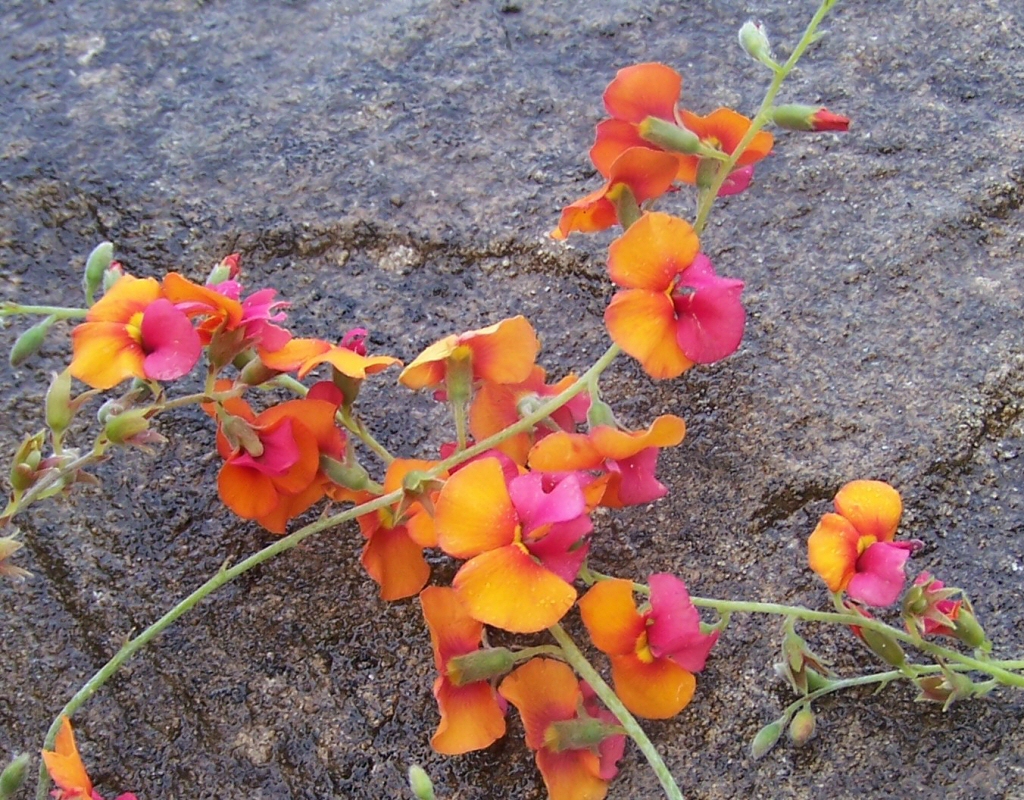
Chorizema varium Flame Pea Gardening With Angus
Chorizema cordatum, known as the heart-leaf flame pea or Australian flame pea, is a flowering plant of the pea family, endemic to gravelly or loamy soils in eucalyptus forests, in the moist south western parts of Western Australia. The Noongar peoples know the plant as kaly.[1]
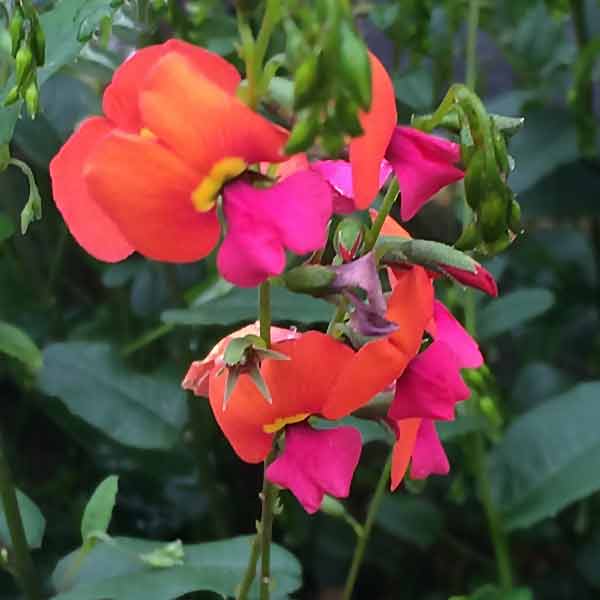
Chorizema cordatum Heartleaf Flame Pea Nurseries Online
For the best results, a flame pea plant should be kept cool and somewhat dry during fall and winter to protect it from root rot, but will appreciate more warmth in the spring when it begins flowering.

PlantFiles Pictures Australian Flame Pea, Heartleaved Flame Pea (Chorizema cordatum) by
Cultivar Name: Plant Type : Small shrub Width : 1 Flowering Time : Spring, Winter Soil Type : Sandy, Loamy, Sandy loam, Potting mix Climate Zone : Warm temperate, Cool temperate, Mediterranean Growth Habit : Evergreen, Spreading, Mound-shaped Soil Moisture : Well-drained Special Uses : Pipe and drain friendly Scientific Name: Chorizema varium

Plant profile Flame pea The West Australian
Chorizema cordatum. Australian flame pea. A bushy evergreen shrub to 1.2m in height, with spiny, heart-shaped dark green leaves and racemes of red, orange and yellow flowers 1.5cm across

PlantFiles Pictures Chorizema Species, Australian Flame Pea, HeartLeaved Flame Pea (Chorizema
Chorizema cordatum. Family: Fabaceae subfamily Faboideae Distribution: South Western Australia. Common Name: Heart-leaf flame pea Conservation Status: Not considered to be at risk in the wild. Derivation of Name: Chorizema…from Greek, choros, a dance and, zema, a food, an apparent reference to the feelings of the discoverers on finding this genus and water at the same location.
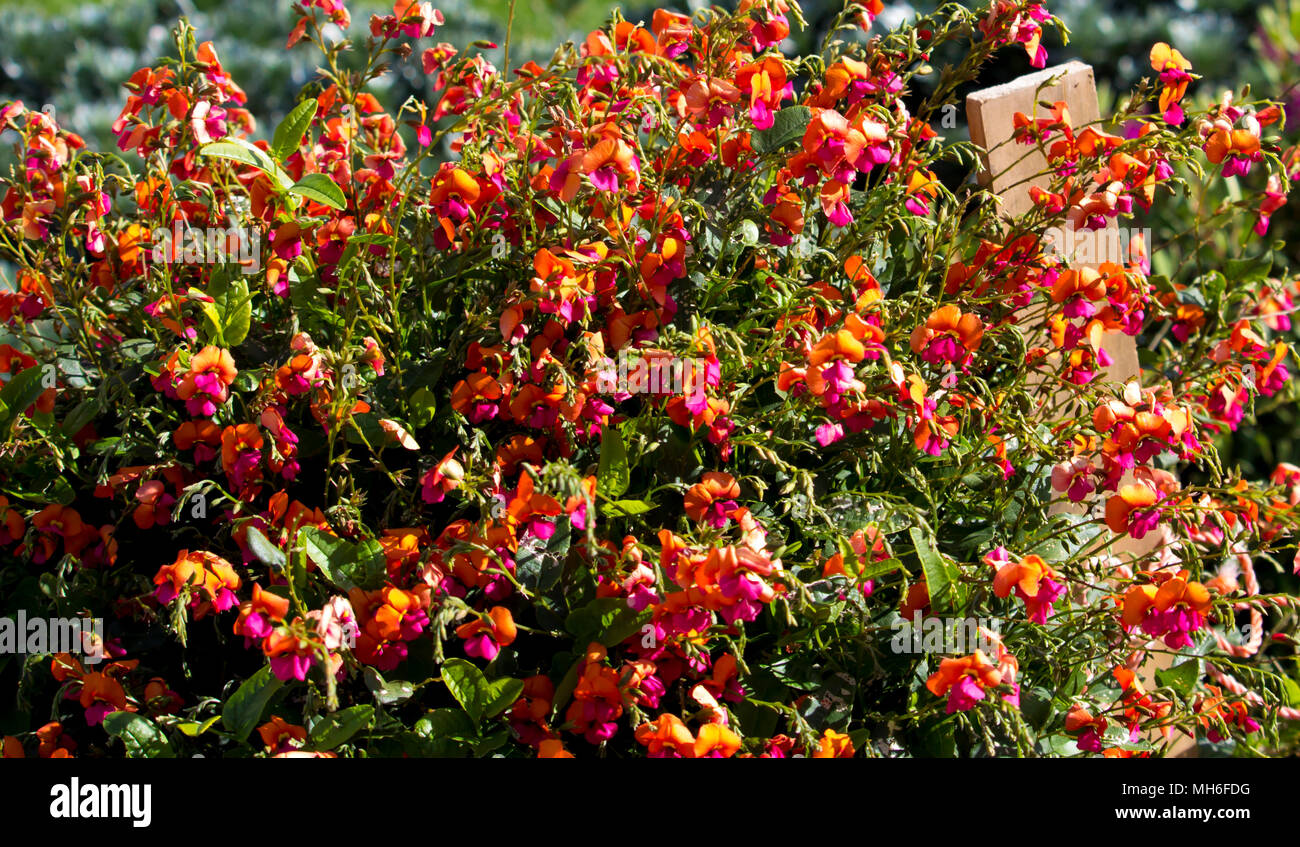
Chorizema cordatum, heartleaf flame peas a flowering plant of the pea family, in gravelly or
Chorizema 'Bush Flame' (Flame Pea) - An evergreen plant with arching to semi-erect sprays of brilliant orange and pink pea flowers with some bloom almost the year around and peak flowering from fall through early spring. 'Bush Flame' spreads to 2 to 3 feet tall by 3 feet wide or wider with bright green heart-shaped leaves.

NixPixMix AUSTRALIAN FLAME PEA
His team of explorers would dance and rejoice every time they saw this plant and water at the same site, thus "choros" - the Greek word for dance, and "zema" the Greek word for drink. Those zany explorers! This plant would be ideal as an edging along a rock wall or in a large hanging basket, and can take some frost. Claire Woods.

PlantFiles Pictures Chorizema Species, Climbing Flame Pea (Chorizema diversifolium) by
Hardy to 20-25 degrees F. 'Bush Flame' is reputed to be a hybrid between Chorizema cordatum and C. varium. It is a spreading shrub with slender stems, growing to perhaps 3 feet high by 4-5 feet broad. The stems are closely lined by toothed, perfectly heart-shaped, deep green leaves. The leaves also have an attractive satiny surface.

Chorizema cordatum, heartleaf flame peas a flowering plant of the pea family, in gravelly or
Chorizema cordatum, commonly known as the Heart-leaf Flame Pea, occurs naturally in the forests of south-western Australia on gravelly or loamy soils. When in flower this small scrambling shrub is conspicuous with its loose racemes of orange-red or yellow pea flowers.
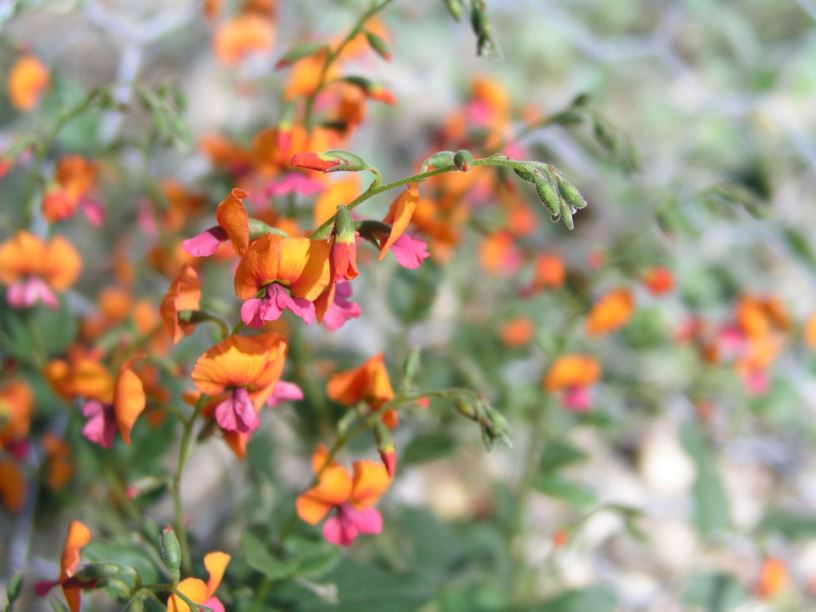
Chorizema cordatum Heartleaved Flame Pea The Australian Botanic Garden Mount Annan
The Heart-Leaf Flame Pea The common name aptly describes Chorizema cordatum, heart shaped foliage and bright red pea like flowers. In full flower, this is a very colourful, even spectacular plant. It originates from the southern areas of WA and is found in wetter areas than may other species.

PlantFiles Pictures Chorizema Species, Australian Flame Pea, HeartLeaved Flame Pea (Chorizema
Chorizema cordata [Heart-leaved Flame Pea] part of the Fabaceae family with Orange-red & yellow flowers flowering in Winter-spring-summer avaliable from Australian Native Plants located in Ventura, CA. If pruned lightly after flowering it will prolong the life of the plant and extend flowering time. Prefers partial shade but will grow in.

Chorizema 'Bush Flame Pea' 6" Pot Hello Hello Plants & Garden Supplies
Heart Leaf Flame Pea (Chorizema cordata) Brightly colored orange and pink pea-shaped flowers appear from winter to spring on this compact shrub that grows well in full to partial sun. A native to southwestern Australia, this winter bloomer will delight the gardener by adding color to the dark days. Grow in a cool location, below 60°F, during.
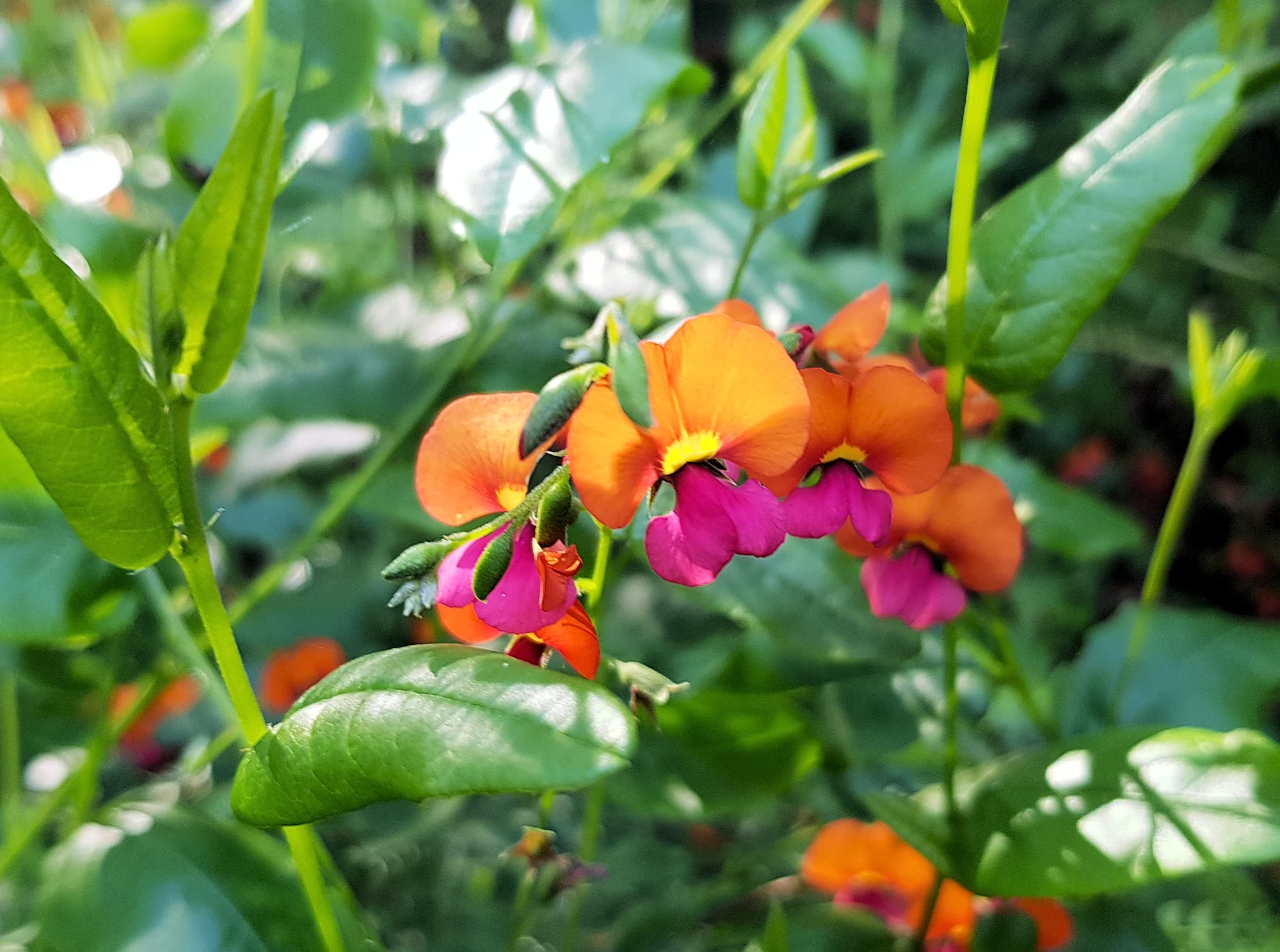
Flame Pea Ausemade
Chorizema cordatum, known as the heart-leaf flame pea or Australian flame pea, is a flowering plant of the pea family, endemic to gravelly or loamy soils in eucalyptus forests, in the moist south western parts of Western Australia. The Noongar peoples know the plant as Kaly.

PlantFiles Pictures Australian Flame Pea, Heartleaved Flame Pea (Chorizema cordatum) by
Home Plant Lists Shrub List Drought Tolerant Plants Dry Shade Gardens Spring Flowers Full Sun Plants. Chorizema cordatum is a brilliantly flowered small shrub with showy orange flowers. The Heart Leaf Flame Pea can be particular about soils, drainage, frequency of irrigation, and water quality.

Chorizema cordatum Heartleaved Flame Pea The Australian Botanic Garden Mount Annan
Chorizema, commonly known as flame peas, [3] is a genus of flowering plants in the family Fabaceae and is endemic to Australia. Description Plants in the genus Chorizema are mostly shrubs or subshrubs, sometimes climbers, usually with simple leaves arranged in opposite pairs, the flowers usually arranged in racemes, each flower on a short pedicel.

Chorizema Cordatum Name HeartLeaf Flame Pea) 175mm Pot Dawsons Garden World
Chorizema cordatum, the Heart-leaf Flame Pea, is a woody scrambling/climbing shrub, often with many stems, capable of climbing to 2 metres or more and forming clumps up to 1 metre wide. It is a native of south-western Western Australia, growing as far east as Albany (and north of) - west and north along the coastal areas to south of Eneabba.